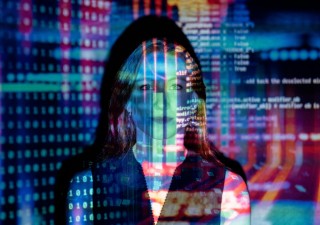Seven key decisions of 2024 on computer-related inventions and their impact on high-tech innovations in India
24 January 2025

A 2019 ruling of the Delhi High Court held that CRIs demonstrating technical advancements beyond ordinary computing processes can qualify for patents. Even so, the IPO did not follow the decision with uniformity and rejected applications that may have otherwise proceeded to grant under the new standard. Applicants appealed the refusals, and in 2024, decisions were rendered setting the stage for a more uniform application of construing patentability of CRIs. Pankaj Soni reports.
In the most rudimentary sense, artificial intelligence (AI) involves complex algorithms, machine learning, data analysis, and computational power to solve problems, automate tasks, and improve efficiency across various domains. In this avatar, AI is increasingly becoming critical to businesses involving advanced, cutting-edge technologies and, consequently, is considered a cornerstone of the high-tech industry.
As the AI revolution gathers pace, the legal landscape for patenting AI-based inventions has never been more crucial. In India, Section 3(k) of the Indian Patents Act, 1970, expressly excludes, inter alia, “algorithms” and “computer programs per se” from patentability. A flurry of recent decisions have been permissive and made the position of the Indian Patent Office (IPO) clearer with regard to the patentability of computer-related inventions (CRIs); however, the IPO has not promulgated any Rules as yet to govern the examination of AI-driven inventions. Also, there is no AI-specific statutory framework in the country. In this context, will the Section 3(k) exclusion possibly stifle the patentability of AI-driven innovation? This is a question sought to be answered by this article by analysing AI-driven inventions through the lens of rulings regarding computer-related inventions (CRIs) and Section 3(k).
Section 3(k)
Over the years, the ambiguity surrounding Section 3(k) has led to significant debate on whether the provision appropriately balances the need for innovation with the goal of preventing monopolies on abstract algorithms and computer programs. The erstwhile Intellectual Property Appellate Board (IPAB) took some baby steps to offer clarity but was plagued with significant delays, consequent to which no clear direction emanated from its decisions. It was only after the Tribunals Act, 2021 abolished the IPAB did the country embark on a path of much-needed clarity on the interpretation of Section 3(k). With appeals from IPO decisions being heard by various High Courts, recent rulings have shed light on how CRIs should be evaluated for patentability and, correspondingly, how AI-driven inventions can overcome the algorithmic exclusion based on their technical contribution or transformative impact. Here’s a look at seven key decisions of 2024 and their prospective impact on high-tech innovations in India.
2024 court rulings
The 2019 ruling of the Delhi High Court in Ferid Allani v. Union of India has proved transformative. Here the court held that CRIs demonstrating technical advancements beyond ordinary computing processes can qualify for patents, provided they offer real-world applications and technical effects. Even so, the IPO did not follow the Ferid Allani decision with uniformity in subsequent cases and rejected applications that may have otherwise proceeded to grant under the new standard. Several applicants appealed the refusals, and in 2024, quite a few decisions were rendered setting the stage for a more uniform application of construing patentability of CRIs.
In April, the Delhi High Court addressed Microsoft’s appeal (IPD-PAT 185/2022) from the IPO’s refusal under Section 3(k) holding that the invention was performed by a processing unit that executes computer-executable instructions, without inclusion of novel hardware (relying on the 2016 CRI guidelines). The operative issue was the interpretation of ‘per se’ in the context of the eligibility of computer programs for patent protection under Section 3(k). In reaching its decision overturning the refusal, the court noted that the IPO erred in applying the novel hardware criteria. It agreed with Microsoft’s position that the patent application addressed the technical problem of inefficiency in encoding blocks of 2D digital media data by partitioning the media data into macroblocks, applying a reversible 2D overlap operator offset from the borders of these blocks, and employing a reversible 2D block transform aligned with the borders of the macroblocks. The invention, the court found, provided a real-world application for complex mathematical transformations and integrated its operations into a hardware setup that directly contributed to improved system performance and efficiency.
Reaffirming a progressive standard and striking down reliance on the 2016 CRI Guidelines that mandated novel hardware, in Lava v. Ericsson (a case fundamentally related to an SEP battle), the Delhi High Court in March held that inventions that enhance “the functionality of a system or hardware component, and meet all the criteria for patentability, can indeed be considered patentable”, subject to demonstration of a tangible technical effect. In Lava, the Court unequivocally stated that “an invention should not be deemed a ‘computer programme per se’ merely because it incorporates algorithms and computer executable instructions... [and] if the subject matter is implemented on a general-purpose computer, but results in a further technical effect that improves the computer system’s functionality and effectiveness, the claimed invention cannot be rejected as non-patentable.”
Following this decision, in July, the Madras High Court, also in an appeal filed by Microsoft (PT No. 49 of 2023), clarified that Section 3(k) does not exclude all computer related inventions from patent eligibility. Here the IPO had refused the application on the grounds that the invention related to a computer program per se. On appeal, the Court analysed legislative history and jurisprudence to affirm that if a patent application involving a CRI “results in a technical effect that improves the system's functioning and efficacy (effect on hardware), or provides a technical solution to a technical problem”, it would not fall under Section 3(k). After analyzing the invention, the court held that since the invention’s technical effect lay in enabling the outflow of commands to unrelated applications from a single command surface, this outcome avoided the need of having multiple command surfaces and, therefore, increased a system’s efficiency. Since these features resulted in a technical effect that improved a system’s functioning and efficacy, it did not form non-patentable subject matter and should be allowable.
Back at the Delhi High Court, on July 30, in AB Initio’s appeal (IPD-PAT 26/2021) against a refusal, the court held that the invention claimed in AB Initio’s patent demonstrated technical effect and structural features beyond a computer program per se, rendering the rejection unsustainable. AB Initio had filed two divisional patent applications focused on improving data profiling and analysis efficiency using specialized processing modules and the IPO had rejected both applications under Section 3(k).
On appeal, the patentee contended that the inventions showcased tangible benefits such as faster data processing, parallel processing capabilities, reduced storage requirements, and improved computational efficiency. These technical effects extended beyond the routine interaction between software and hardware. Further, specialized components like partition and rollup modules indicated a technical process distinct from mere algorithmic execution. The court agreed that the method increased computational efficiency, enabled parallel processing, and saved storage space without duplicating data, all contributing to a technical effect and, therefore, the invention was allowable.
A month later, on August 30, the Delhi High Court issued two decisions with differing opinions for Blackberry Limited, nuancing the evaluation criteria under Section 3(k). In the first Blackberry decision (IPD-PAT 229/2022), the court dismissed Blackberry’s appeal contesting the rejection of its patent application. The court agreed with the IPO which had concluded that the invention for administering wireless systems to resolve configuration conflicts between primary and secondary servers was primarily algorithmic. Despite Blackberry’s claims of technical contribution and inventive features, the court determined that the core of the invention was a sequence of logical instructions for regulating data flow between servers and devices and, therefore, non-patentable.
The court emphasized that Blackberry’s invention failed to show hardware transformation or technical advancements beyond algorithms. It highlighted key parts of the specification, including references to “policy agents” and “communication policies,” which indicated reliance on algorithmic processes. It also analyzed terms like “if-then-else” logic, concluding that the invention’s contribution was inherently algorithmic, not technical and thus, non-patentable. Though the court criticized the IPO’s reliance on inventive hardware, it reinforced that technical contributions beyond algorithms are required.
The second Blackberry appeal (IPD-PAT 318/2022) fared better. Blackberry contended that the invention, relating to a method for managing media content based on confidence levels derived from metadata, did not fall under the ambit of a computer program per se. Rather, the invention presented a technical solution, offering advancements in dynamic media synchronization and storage management by automating file management by evaluating metadata to assign confidence levels to media files. Based on these confidence levels, media files are categorized, selected, and stored dynamically. The Delhi High Court analyzed the invention’s ability to enhance device functionality by enabling dynamic media synchronization, categorization, and storage optimization. Features like cache management and metadata-driven categorization were deemed to provide technical effects beyond mere automation of user preferences. Thus, the invention was found to lie outside the ambit of Section 3(k).
Interestingly, the court considered persuasive the patent’s acceptance in jurisdictions like the U.S. and Australia, emphasizing the invention’s global recognition as novel and inventive, but also found the refusal by the EPO to be unpersuasive as it was based on criteria of the invention lacking novelty.
In November, in an appeal by Comviva Technologies (IPD-PAT 492/2022), the Delhi High Court set aside a patent refusal for being related to a computer programme per se and business method. The patent application in question aimed to improve the security of electronic payment cards through various measures. First, it stored electronic tokens on the card for a limited time, preventing unauthorized transactions using invalid tokens. Second, the token was only transmitted when the card was near the mobile device, minimizing the risk of token theft. Third, it incorporated two-step verification before authorizing any transaction.
Beyond a contention that the invention was a mere commercial transaction, the IPO emphasized the claims were essentially a set of executable instructions that neither demonstrated technical advancement nor exceeded the conventional interactions between software and hardware. As a result, the invention was excluded on the grounds of being a ‘computer program per se.’
The court analyzed the object of the invention and the subject matter of the claims and found that the invention improved security by eliminating invalid tokens and ensured only authorized tokens are accepted for conducting transactions. Thus, the invention did not relate to a business method or financial transaction but rather addressed a technical problem which was to prevent unauthorized transactions using electronic payment cards. The court also noted that the invention resulted in a technical advancement in contactless payments. After reviewing existing judicial precedents on the issue, and in view of the technical problem and technical advancement disclosed by the invention, the court found that the subject matter of the invention did not relate to a computer programme per se.
As if on cue, the Madras High Court, on the same day, in an appeal filed by Idemia (PT No. 198 of 2023), quashed a non-speaking order passed by the IPO refusing the grant of an application pertaining to a secure method for applying cryptographic calculation to a message through algorithms inserting arbitrary values into the elliptical curves. The invention applies cryptographic calculations using algorithms on elliptical curves, and is designed to mask encoded message information, and prevent timing attacks by ensuring constant computation time through probabilistic insertion.
On review, the court found that the invention passed the technical effect test as it results in improvement in calculation performance, while not allowing any attack linked to the execution time of the cryptographic calculation. The court allowed the appeal and noted that the IPO had failed to appreciate the practical application of the invention which, though based on an algorithm and/ or set of rules, is accompanied by several technical contributions.
Conclusion
All in all, 2024 was a good year for CRIs as the High Courts of Delhi and Madras passed judgments reinforcing the interpretation that hardware features are not required for computer-related inventions and a technical effect and technical contributions can overcome a seeming bias that an invention is nothing more than an algorithm. All indications are that this trend will continue into 2025 and beyond, which is particularly important for AI inventions as all such applications will be scrutinized under the CRI guidelines, at least until the Indian IP regime comes up with guidelines for AI related inventions. Stay tuned!







